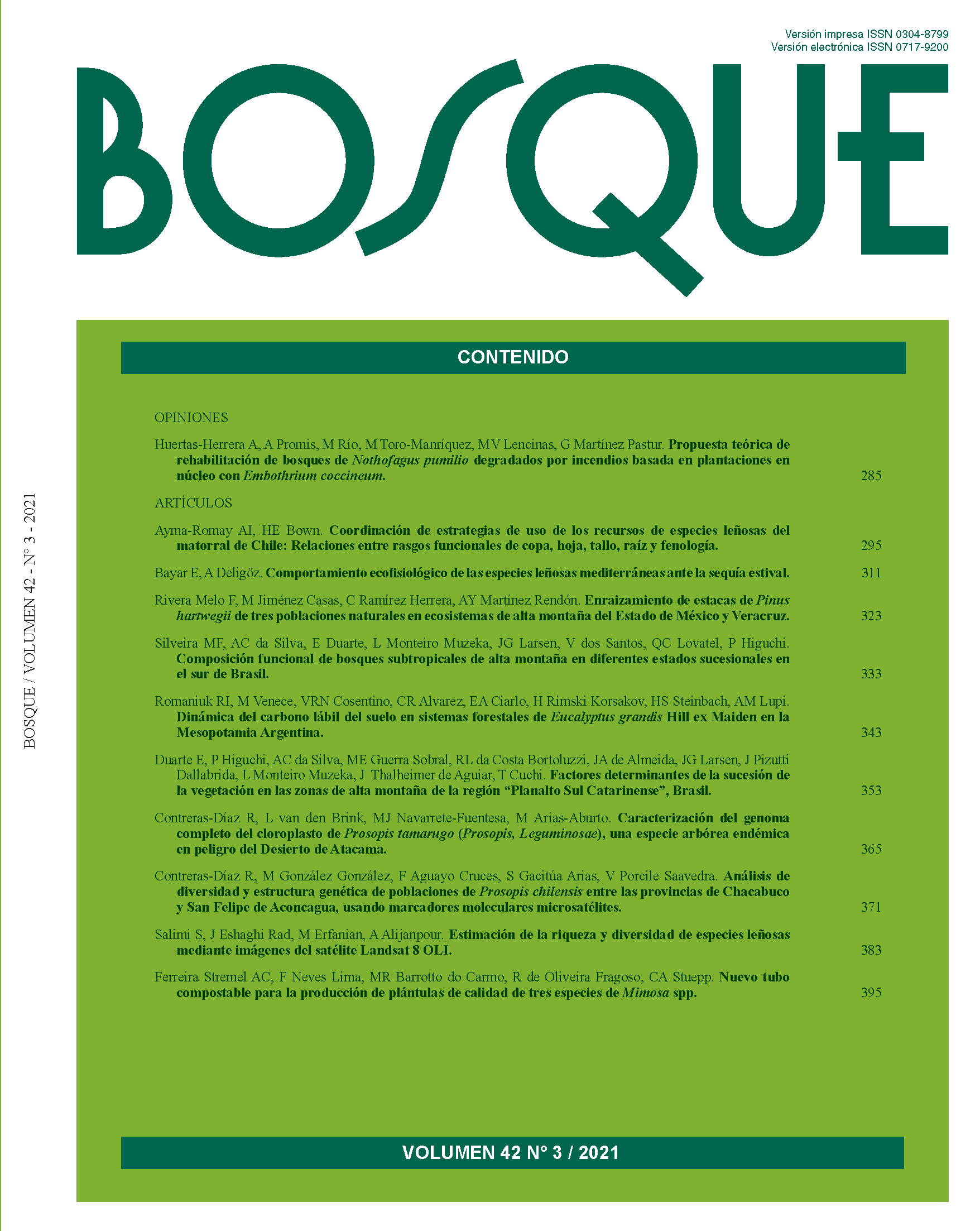Estimation of woody species richness and diversity using Landsat 8 OLI Satellite images
Conteúdo do artigo principal
Resumo
One of the most important issues in forest management is preservation and development of biodiversity. This study aims at estimating richness, evenness and species diversity of woody plants in Arasbaran Protected Area (East Azerbaijan Province, Iran) using Landsat 8 OLI satellite images based on Multiple Linear Regression (MLR) and Classification and Regression Trees (CART) models. This study was performed in an elevation range of 1,000 - 1,850 m. A total of 130 samples were selected based on physiographic factors. In each sampling plot, number and type of dominant tree species in the canopy were recorded. Statistical modeling was carried out by calibrating MLR and CART models. The R-squared values of MLR models were in the range of 0.10 - 0.24 for predicting richness, evenness and Shannon and Simpson’s species diversity indices based on greenness as the only predictor variable (other variables were excluded from MLR models). The R-squared values of CART models were equal to 0.21, 0.42, 0.41 and 0.42, respectively. Validation of the results indicated that the CART model had a relatively better performance compared to MLR model. Overall, both methods could not estimate species richness and diversity very precisely based on Landsat 8 OLI Satellite data in the region suggesting the necessity to use high-resolution satellite data for the best evaluation of forests diversity indices in mountainous forests.

